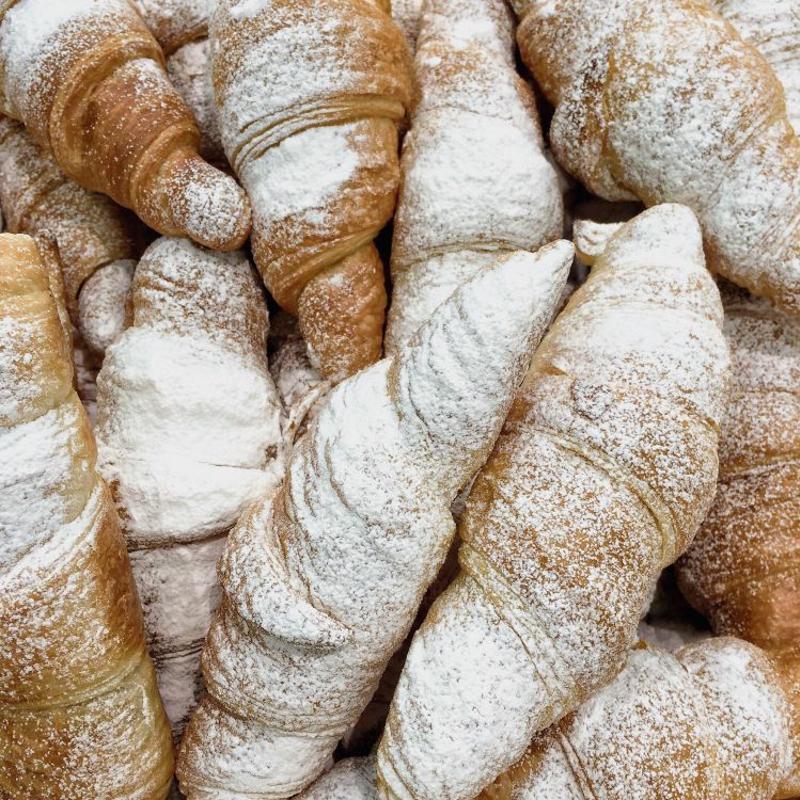Croissants to swear by (and die for)
The perfect croissant has very distinct qualities. It’s light, fluffy, buttery and flaky. It goes well with your morning coffee or as a side at the dinner table.
Perfection isn’t easy to achieve, as any online pastry student who’s tried whip up a batch of croissants likely knows. To get the ideal texture, flavor and golden-brown color, you’ll need to practice your technique.
What makes a croissant unique
There are two big differences between baking a typical pastry and a croissant that gives this crescent-shaped treat its unique qualities. First, croissants are a yeast pastry, and you’ll need to make a preferment before you make the dough. That’s part of what gives it that fluffy, pull-apart texture.
Second, croissants are laminated. That means the dough is evenly coated with a fat, then folded over and over again into thin layers. This is what gives it the flaky, buttery feel.
How to make the perfect croissant
To begin, activate your yeast in a warm liquid. For croissants, the go-to is milk. Temperature accuracy is key here. Too hot and the yeast won’t bloom; too cold, and it’ll take a very long time. Saveur recommends heating your milk to between 80 and 90 degrees Fahrenheit.
 Croissants are made in a very specific way that shouldn’t be rushed.
Croissants are made in a very specific way that shouldn’t be rushed.Sprinkle your yeast over the milk and mix in some flour. Let rest until doubled.
Once the preferment is ready, add more yeast and mix until evenly dispersed. Slowly add your milk, flour, sugar, salt and melted butter. Mix this thoroughly, then knead the dough. Epicurious pointed out that kneading is the only way to develop the characteristic croissant texture. The stronger the dough is, the easier the lamination process will be.
Once the dough is ready, cover it with a bread towel and let rise until the volume increases by about half. Now, shape the dough into a rectangle about 2 inches thick. Wrap the dough in plastic wrap, then refrigerate for 3 to 4 hours.
Prepare the butter about an hour before it’s time to laminate. Cover your work surface with parchment paper. Pile your butter in the center, then cover with another sheet of parchment paper. Flatten the butter and roll into a smooth, seamless rectangle, about 18.5 inches by 12 inches. Refrigerate for 5 to 10 minutes to chill but not harden.
Bring out your dough and roll it into a rectangle about 28 inches by 12 inches, with the 28-inch side facing you. Then, take out the butter and remove the top sheet of parchment paper. Turn the butter over so it covers the left side of your dough, then remove the other sheet.
Fold the uncovered third of your dough over the top of the butter. Next, fold the left side over the center of the dough. Press down along the seams to enclose the butter in the dough. Now, turn the dough 90 degrees and roll again into a 28-by-12-inch rectangle. Fold the right third to the center, then repeat with the left third. Wrap in plastic and return to your refrigerator for an hour.
Once again, remove the dough and roll into a rectangle of the same size. Fold into thirds so the result is a 9-by-12-inch rectangle. Wrap in plastic and freeze for an hour.
Remove the dough and roll into a 12-by-40-inch rectangle. Cut the dough into triangles, 10 inches tall and 4 inches wide. Stretch them slightly, then start rolling from the base. Let your rolls rise until about double.
Beat together egg yolks and heavy cream, then brush the tops of your croissants with the mixture.
Heat your oven to 400 degrees Fahrenheit with a bowl of water placed at the bottom to provide humidity. Bake the croissants for 20 to 22 minutes, or until they begin to color. Rotate the pans to give a more even color and remove from the oven when they’re golden.


